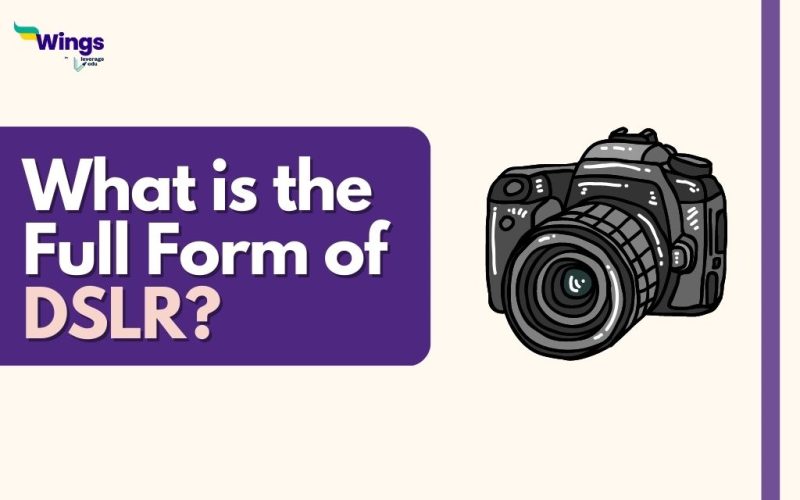The DSLR full form is a digital single-lens reflex camera. It is a digital camera that combines the optics and motor of a single-lens reflex camera with a digital imaging sensor. Simply put, it is a digital camera with a mirror that directs light from the lens to the viewfinder. The viewfinder is a hole in the back of the camera that is used to preview images before they are captured. DSLR cameras include interchangeable lenses. It allows you to change lenses to acquire diverse perspectives on a scene.
In terms of general modifications, these DSLRs are adaptable digital cameras for professionals or photography enthusiasts. DSLRs combine an SLR (single-lens reflex camera) with a digital back camera, which replaces film in photography. There are a lot of countries abroad that offer photography courses that you can pursue if you have an interest in photography.
Elements of DSLR
A DSLR camera operates with a fixed, digital sensor. It has the capability to autofocus and hold thousands of photographs on its internal memory card, which makes it a favourite camera choice for both entry-level and professional photographers alike.
The primary components of digital single-lens reflex cameras are as follows:
- Reflex mirror
- Lens
- Shutter
- Image sensor
- Condenser lens
- Viewfinder
- Mate focusing mirror
- Pentaprism
Working Principles of DSLR
Have a look at the main working principles of a DSLR:
- Light enters the camera through the prism and strikes the reflex mirror.
- The light is vertically reflected upwards by the reflex mirror to the focusing screen.
- Light flows through the focusing display and reaches the pentaprism block of glass.
- The pentaprism concentrates light through two separate mirrors before diverting it to the viewfinder.
- The viewfinder provides viewers with a live image preview.
- After users press the button to capture an image, the reflex mirror now flips upwards, preventing the vertical path of light from holding it straight towards the image sensor.
- The shutter will open, allowing light to access the picture sensor.
Benefits of DSLR over Regular Cameras
There are various benefits of using a DSLR camera over regular cameras, such as:
- In low light, DSLR image quality is superior to that of a basic digital camera.
- The interchangeable lenses are available on DSLR cameras.
- When compared to utilising a basic digital camera, image editing is simple.
- A DSLR camera offers a wider ISO range, less noise, and faster focusing than a standard digital camera.
- DSLR cameras include a dust-removal system as well as the ability to use filters, whereas simple cameras do not.
Also Read: How to Become a Photographer?
Hope now you know the DSLR full form. If you are looking to study abroad you can reach out to our experts at Leverage Edu and you can also check our page for more related content.
 One app for all your study abroad needs
One app for all your study abroad needs














 45,000+ students realised their study abroad dream with us. Take the first step today.
45,000+ students realised their study abroad dream with us. Take the first step today.

